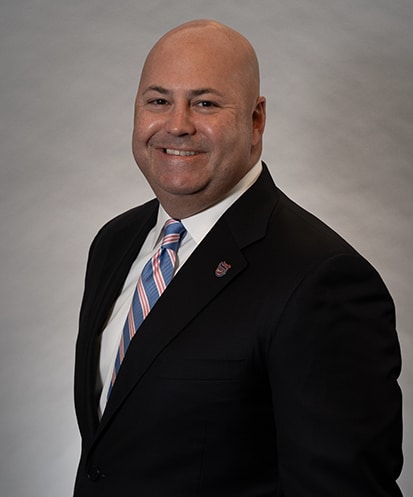How Does the Premarket Notification 510(K) Process Create Defective Medical Devices?
 How much time would you guess goes into developing a medical device for the marketplace? It does not take as long as some people would think. All it requires for a medical device to be introduced to the marketplace is a period of three months. If that concerns you, it should. There are definitely some causes for worry with the process of approving medical devices for public consumption.
How much time would you guess goes into developing a medical device for the marketplace? It does not take as long as some people would think. All it requires for a medical device to be introduced to the marketplace is a period of three months. If that concerns you, it should. There are definitely some causes for worry with the process of approving medical devices for public consumption.
What is the 510(K) process?
The 510(K) Process is the federal government-issued requirement that manufacturers must follow to seek approval for their medical devices. Device manufacturers have a 90-day period to notify the Food and Drug Administration (FDA) of their intent to sell a specific medical device in the marketplace. During this 90-day period, the FDA will determine whether the medical device is similar to a device that is already placed into one of three classifications (which we’ll talk about more in a moment) and determine if it is safe and appropriate to put on the market.
What is the premarket approval process?
The Premarket Approval process is the second method that the FDA uses to approve the use of medical devices in the American marketplace. Medical devices that are taken through the Premarket Approval Process are required to pass several clinical and laboratory studies and a detailed process that tests the device’s effectiveness and safety. Depending on certain circumstances, the device manufacturer can skip clinical trials and testing if it can prove that the device is “substantially equivalent” to another device that is already in the marketplace.
Three classifications of medical devices
The FDA separates medical devices into three categories:
- Class I devices. These devices are exempt from the regulation process and do not have to receive clearance from the FDA to be marketed. Device manufacturers are only required to register their establishment and list the products with the FDA.
- Class II devices. These devices contain a moderate to high risk and are more likely to come into sustained contact with a patient. Some examples of Class II devices include pregnancy test kits, catheters, contact lenses, and syringes. Device manufacturers must issue special labeling requirements, patient registries, and performance standards.
- Class III devices. These devices must be cleared through a stringent Premarket Approval Process because they present a potential unreasonable risk of illness or injury. Some examples of Class III devices include breast implants, defibrillators, pacemakers, and implanted prosthetics. These devices are required to pass several rigorous tests to prove their effectiveness and safety.
What are criticisms of the 510(K) process?
Many critics of the 510(K) Process argue that there is a correlation between the 90-day period and the rise of medical device recalls. Others argue that the process’s speedy nature puts the lives of many people in danger. The 510(K) Process allows device manufacturers to deliberately introduce defective medical devices to the general public because of the lack of testing. One of the examples that critics often use is defective transvaginal mesh devices, which avoided necessary testing that could have prevented many women from suffering so much harm.
Another common critique is the small amount of oversight within the process. The 510(K) Process is responsible for clearing between 95 to 98% of medical devices in the American marketplace. That means that most of the medical devices that are currently on the marketplace have received little government scrutiny. It also means that device manufacturers can introduce a defective medical device to the marketplace with little to no supervision.
Researchers have discovered that medical devices cleared through the 510(K) Process are 11.5 times more likely to be recalled compared to devices that were cleared through the Premarket Approval Process. Unlike the Premarket Approval Process, medical devices cleared through the 510(K) Process did not require clinical trials.
How the 510(K) process affects the consumers
When patients use a medical device, they may assume that the medical device has been officially tested and approved by the FDA. However, some medical devices may have been cleared through the 510(K) Process with no clinical testing done whatsoever. Even though the FDA is legally required to share the data that they used to determine the device’s “substantial equivalence,” the agency only makes that data public with 16% of the cleared devices.
These defective devices have led to countless injuries for patients and thousands of lawsuits nationwide. Even after the company recalls the device, the damage is still done. There are not only patients who are still suffering serious harm, but other manufacturers continue designing similar devices.
Legal repercussions for medical devices cleared through the 510(K) process
Fortunately, the law has made it easier to file lawsuits against manufacturers whose devices have been cleared through the 510(K) Process. The courts generally hold that the process does not automatically translate to the effectiveness or safety of a medical device. Device manufacturers are often surprised to discover that the courts exclude evidence of the FDA’s clearance of their devices. The courts’ opinions are similar to those of many 510(K) critics: that the process requires little information, rarely receives a negative response from the FDA, and is approved very quickly.
Please contact Paulson & Nace, PLLC, through this contact form or by calling 202-463-1999.

Christopher T. Nace works in all practice areas of the firm, including medical malpractice, birth injury, drug and product liability, motor vehicle accidents, wrongful death, and other negligence and personal injury matters.
Read more about Christopher T. Nace.
